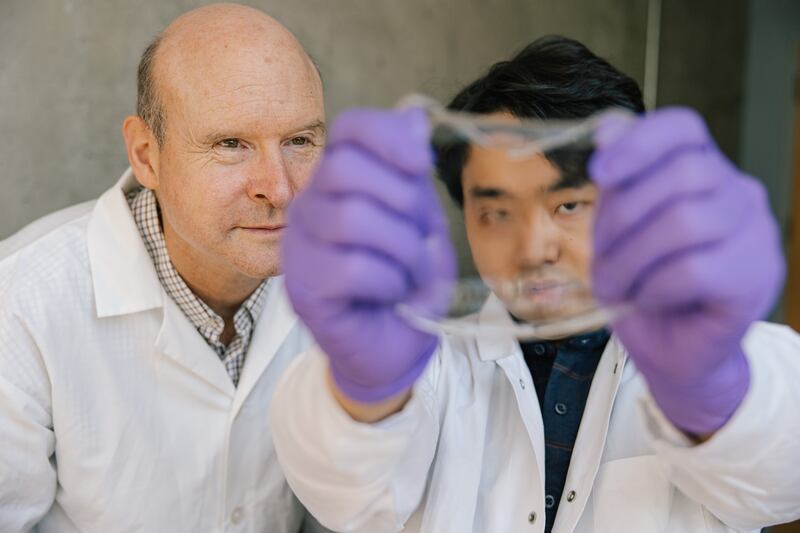Just beneath the skin, there are electrical charges zipping around relaying information to your brain and spinal cord about your environment like temperature fluctuations, changes in texture, vibrations, and pain. Replicating this sensory complexity has been the goal of many scientists seeking artificial skin that functionally resembles human skin. And in the last few decades, a promising, ultra-sensitive material has risen to the occasion: hydrogels.
Considered the first biomaterial designed for the human body, hydrogels are soft, flexible, highly absorbent, and can be engineered to self-heal. Hydrogels also generate electrical charges when touched due to the charged molecules inside of it. But exactly why hydrogels can do this has left scientists scratching their heads.
Thankfully, now we have an answer. In a new study published Thursday in the journal Science, researchers in Canada and France discovered that pressure applied to a hydrogel changes the distribution of charged molecules (called ions) within the material and creates an electric field. This finding confirms hydrogel’s potential as a shoo-in for artificial, human-like skin and may spark a whole slew of life-changing biomedical applications like drug delivery or artificial limbs
“How hydrogel sensors work is they produce voltages and currents in reaction to stimuli, such as pressure or touch—what we are calling a piezoionic effect,” Yuta Dobashi, a doctoral student at the University of Toronto and the new study’s lead author, said in a press release. “But we didn’t know exactly how these voltages are produced.”
As a graduate student at the University of British Columbia, Dobashi set out to uncover the mystery of how these voltages come to be. He created sensors made of hydrogels containing positive and negative ions of varying sizes. These sensors were then blasted with a magnetic field to precisely track how the ions moved when a pressure was applied.
“When pressure is applied to the gel, that pressure spreads out the ions in the liquid at different speeds, creating an electrical signal,” he said. “Positive ions, which tend to be smaller, move faster than larger, negative ions.”

Yuta Dobashi and biomedical engineer John Madden at the University of British Columbia parse out the phenomenon behind hydrogel's electrical capabilities.
Kai JacobsonWhat resulted was a mishmash of positively and negatively charged ions distributed all over the place. This creates an electric field and, in turn, is what makes a hydrogel capable of electrical signaling.
This new knowledge could elevate the use of hydrogels in our everyday lives. Electronic smart skins is a burgeoning market totaling $4.5 billion in 2019 and hydrogels could electrify it to new heights. We might one day incorporate the material into our clothing or right on top of our own skin to collect health or environmental information in real-time.
But Dobashi and John Madden, a biomedical engineer at UBC and the study’s co-author, see immediate applications in the sphere of medical implants like prosthetics that can feel just like skin, or artificial joints that can sense pressure. Hydrogels could be even used for drug delivery where you can control how much medicine is released into the body with a simple push.
“You can imagine a prosthetic arm covered in an ionic skin,” Madden said in the release. “The skin senses an object through touch or pressure, conveys that information through the nerves to the brain, and the brain then activates the motors required to lift or hold the object. With further development of the sensor skin and interfaces with nerves, this bionic interface is conceivable.”







